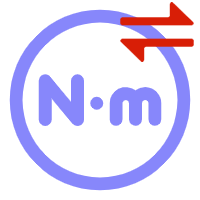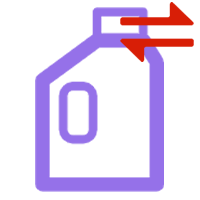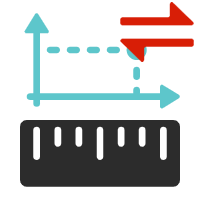
Pound to Grams Converter
Convert pounds to grams instantly with our weight converter. Perfect for cooking recipes, baking measurements, kitchen conversions, food preparation, and weight calculations. Get accurate results.
Pounds to Grams Converter
Enter pounds value and click Convert to get grams.
Enter the value to convert
Relationship Between Pounds and Grams
The conversion between pounds and grams is based on the international avoirdupois pound, which is defined as exactly 453.59237 grams.
1 lb = 453.59237 g
Therefore,
1 g ≈ 0.00220462 lb
To convert pounds to grams, we multiply the value in pounds by 453.59237.
For example, 1 pound equals 453.59 grams, 2 pounds equal 907.18 grams, and 5 pounds equal 2,267.96 grams (or approximately 2.27 kilograms).
Pound (lb)
What is a Pound (lb)?
The pound (symbol: lb, lbs, or #) is a unit of mass used in the imperial and United States customary systems of measurement. The most common definition used today is the international avoirdupois pound, which is legally defined as exactly 0.45359237 kilograms (453.59237 grams). The pound is primarily used in the United States for measuring body weight, food ingredients, and various goods.
History and Origin of the Pound
The word 'pound' comes from the Latin 'libra pondo,' meaning 'a pound by weight,' which is why the symbol 'lb' is used. The pound has a long history dating back to Roman times when the libra was a unit of weight. Over centuries, various pounds were used across different regions and for different purposes. The modern international avoirdupois pound was standardized in 1959 through an agreement between English-speaking countries, defining it precisely in terms of the kilogram.
Different Types of Pounds
While the avoirdupois pound is the most common today, historically there were several types of pounds:
Avoirdupois Pound: 453.59237 g (standard pound for commerce and everyday use)
Troy Pound: 373.24 g (used for precious metals like gold and silver)
Tower Pound: 350 g (historical English unit, obsolete)
Metric Pound: 500 g (used in some European countries, equal to 0.5 kg)
When someone refers to 'pounds' today, they almost always mean the avoirdupois pound.
Modern Applications of Pounds
- Body Weight: Personal weight in the US, UK, and some Commonwealth countries
- Cooking & Recipes: Food ingredients in US recipes and packaging
- Agriculture: Produce, livestock, and grain weights
- Postal Services: Package and letter weights for shipping
- Fitness & Sports: Weightlifting, boxing weight classes, and equipment
- Retail: Pricing of meat, cheese, and bulk foods per pound
- Manufacturing: Material weights and product specifications
- Newborn Babies: Birth weight measurements in pounds and ounces
Pounds in Different Countries
The pound is primarily used in:
United States: Standard unit for weight in everyday life and commerce
United Kingdom: Still commonly used alongside metric, especially for body weight
Canada: Sometimes used informally, though officially metric
Ireland: Older generations still use it, but officially metric
Most other countries use the metric system exclusively, measuring weight in grams and kilograms. International trade, science, and medicine universally use metric units.
Gram (g)
What is a Gram (g)?
A gram (symbol: g) is a metric unit of mass equal to one thousandth of a kilogram (1 g = 0.001 kg). The gram is the base unit of mass in the centimeter-gram-second (CGS) system of units and is widely used worldwide for measuring small quantities of mass. It is defined in terms of the kilogram, which is based on the International Prototype Kilogram.
History and Origin of the Gram
The gram was introduced in France in 1795 as part of the metric system during the French Revolution. The name comes from the Late Latin 'gramma,' meaning 'a small weight.' Originally, the gram was defined as the mass of one cubic centimeter of water at 4°C (the temperature at which water has its maximum density). Today, it is defined as one thousandth of the kilogram, which is now defined in terms of fundamental physical constants.
Gram Subdivisions and Multiples
- Milligram (mg): 0.001 g (used for medication dosages)
- Centigram (cg): 0.01 g (rarely used)
- Decigram (dg): 0.1 g (rarely used)
- Gram (g): Base unit
- Dekagram (dag): 10 g (used in some European countries)
- Hectogram (hg): 100 g (used in some European countries)
- Kilogram (kg): 1,000 g (standard unit for everyday weights)
- Metric Ton (t): 1,000,000 g or 1,000 kg
Modern Applications of Grams
- Cooking & Baking: Recipe measurements worldwide (except US)
- Medicine & Pharmacy: Drug dosages and medical measurements
- Nutrition: Food labels showing nutritional content per 100g
- Laboratory Science: Precise measurements in chemistry and biology
- Jewelry: Weight of gemstones and precious metals (alongside carats)
- Postal Services: Letter and small package weights
- Coffee & Tea: Measuring coffee grounds and tea leaves
- Retail Food: Packaged food weights on labels
Advantages of Grams
Grams offer several advantages as a measurement unit:
Decimal System: Easy conversions (1,000 g = 1 kg, 1,000 mg = 1 g)
Universal Standard: Used in nearly all countries worldwide
Scientific Precision: Accurate for small weight measurements
International Trade: Standard unit in global commerce
Medical Standard: Preferred for precise medication dosing
The gram's relationship to other metric units makes calculations straightforward, unlike the imperial system which requires complex conversion factors between ounces, pounds, and tons.
Pound to Gram Conversion Table
The conversion of pounds to grams for certain values are provided below:
- Pounds [lb]
- Grams [g]
- 0.1 lb
- 45.36 g
- 0.25 lb
- 113.40 g
- 0.5 lb
- 226.80 g
- 0.75 lb
- 340.19 g
- 1 lb
- 453.59 g
- 1.5 lb
- 680.39 g
- 2 lb
- 907.18 g
- 2.5 lb
- 1133.98 g
- 5 lb
- 2267.96 g
- 10 lb
- 4535.92 g
- 15 lb
- 6803.89 g
- 20 lb
- 9071.85 g
- 25 lb
- 11339.81 g
- 50 lb
- 22679.62 g
- 100 lb
- 45359.24 g
- 150 lb
- 68038.86 g
- 200 lb
- 90718.47 g
- 250 lb
- 113398.09 g
- 500 lb
- 226796.19 g
- 1000 lb
- 453592.37 g

Conversion Calculators














































